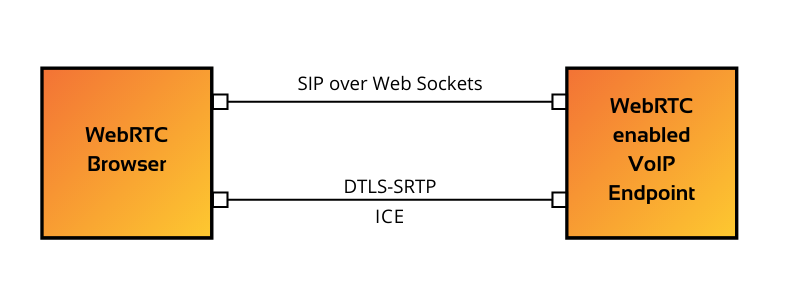Blog Details

WebRTC vs VoIP: a Clash or Coexistence?
- December 8, 2020
- Uncategorized
- Local Area Netwrok
- Technology
- VoIP
- webrtc app development
- WebRTC Technology
The original showstopper
WebRTC technology came buzzing to the fore and changed real-time communication for the better. But, before WebRTC, there was another superstar in the communication technology space – VoIP.
VoIP or IP telephony enabled users to deliver data such as voice, video, chat directly over an internet connection. VoIP facilitated computers to make calls on phones and vice-versa over LANs (Local Area Networks) or the Internet. They convert voice into small packets of data and send those packets to receivers. The data packets at the receiver’s end are then decoded back into voice. Any device with an internet connection can connect with other devices using VoIP.
Though it appears to be new technology, VoIP has been in play since 1970 (Yes! The 70s when Steve Jobs was wandering in India while searching for the meaning of life). VoIP replaced and supplemented the business and interpersonal communications. Enabled by the cloud, the onset of VoIP revolutionized the business world and made the world a smaller place.
The rising star
The next advancement in communication technology came in the form of WebRTC. WebRTC allows users to make phone calls, video calls, Peer 2 Peer file transfers, and text chats through a web browser (or mobile apps).
WebRTC is a JavaScript API, developed to establish communication functionality directly in a web browser. With WebRTC, phone or video calls can be made straight from the web browser without having to load up Flash, or any other plug-ins or app for that matter.
Friends or foes?
WebRTC technology was initially seen as disruptive to VoIP. Some considered them parallel technologies that will never meet. Others said WebRTC will kill or replace VoIP.
So is WebRTC here to kill VoIP? I would say, quite the opposite. The two go along nicely. They are not independent technologies, disruptive to one another, or contending for the spotlight.
We believe that WebRTC will not bleed VoIP dry, rather will boost it. It will add more opportunities for innovation, thereby allowing widespread adoption of VoIP. WebRTC has made VoIP even more robust, user friendly, and flexible. It has made way for simpler, powerful, and unified communication platforms.
Developers at RTCweb.in are now incorporating VoIP capabilities right into websites, or web-based applications. We are adding new layers of functionalities that were previously left to independent applications. Credit for the same goes to WebRTC technology.
Compatibility between WebRTC and VoIP – A match made in heaven
Case – 1
WebRTC is compatible with VoIP. It is designed that way. For instance, WebRTC specifies the use of audio/video coders and decoders that are common among VoIP devices – OPUS and G.711 for audio and H.264, Codec VP9, VP8 video codec for video. This allows WebRTC browsers and VoIP endpoints to transfer media/data without transcoding the streams.

Case – 2
The signaling protocol remains undefined in WebRTC. It is on developers to decide what to implement. This allows developers to create a unique VoIP soft client in the web browser. This adds a new, multi-faceted layer of functionality to the websites – VoIP capabilities with peer-to-peer video and collaboration.
Case – 3
WebRTC has also improved the video quality over other options such as Flash. Our programmers at RTCweb.in have improved user experience for our client websites by having clearer video calls and lower latency, and faster connections.
More cases can be made, supporting the compatibility of the two revolutionary technologies that are extensions of each other. But, I think the point has been proved. WebRTC and VoIP share similar goals. The right use and combination of both technologies with a pinch of innovation can result in path defining applications.
Please visit our blog to learn more about WebRTC. If you are interested in building a WebRTC solution that incorporates VoIP, contact us!